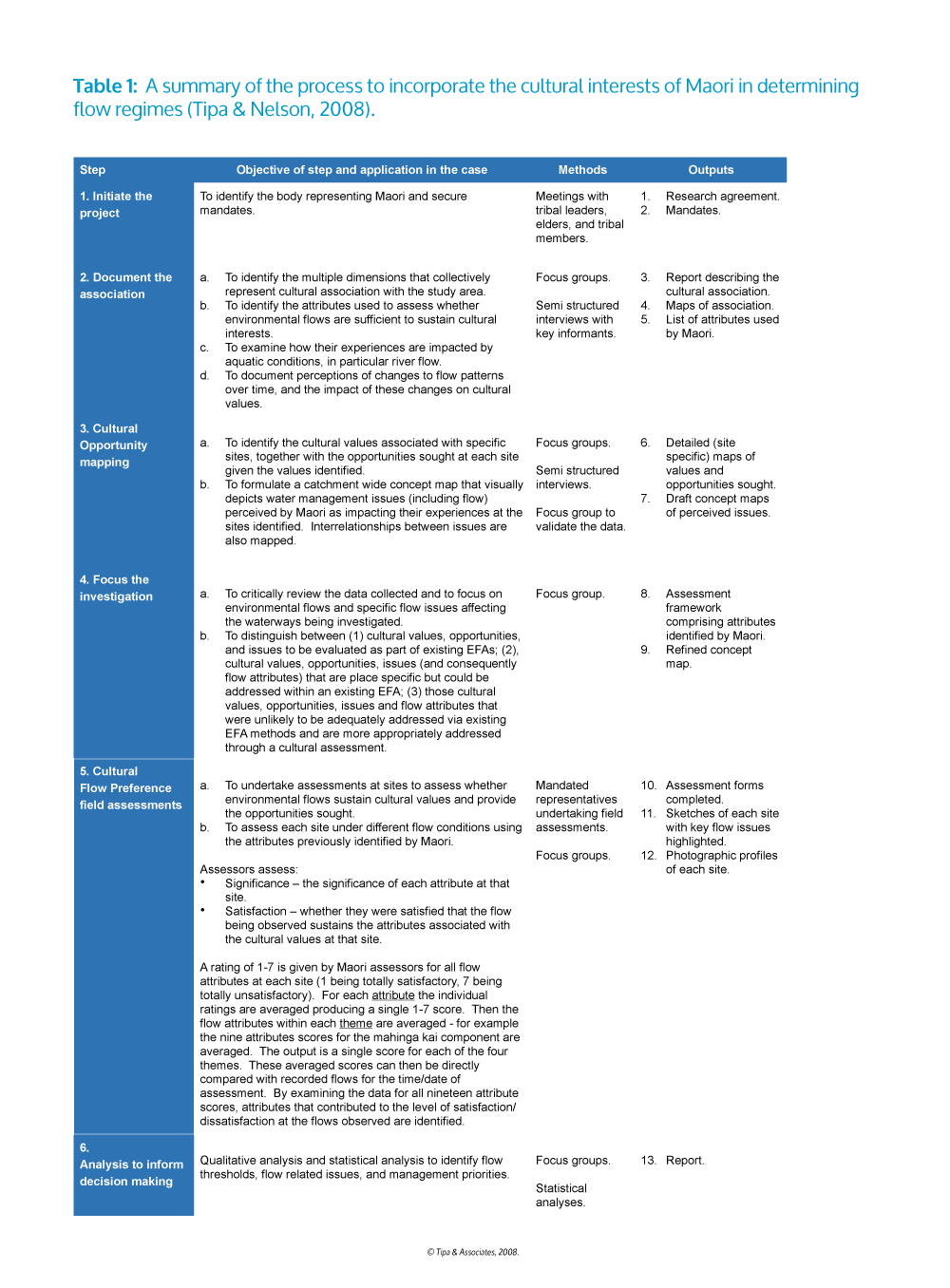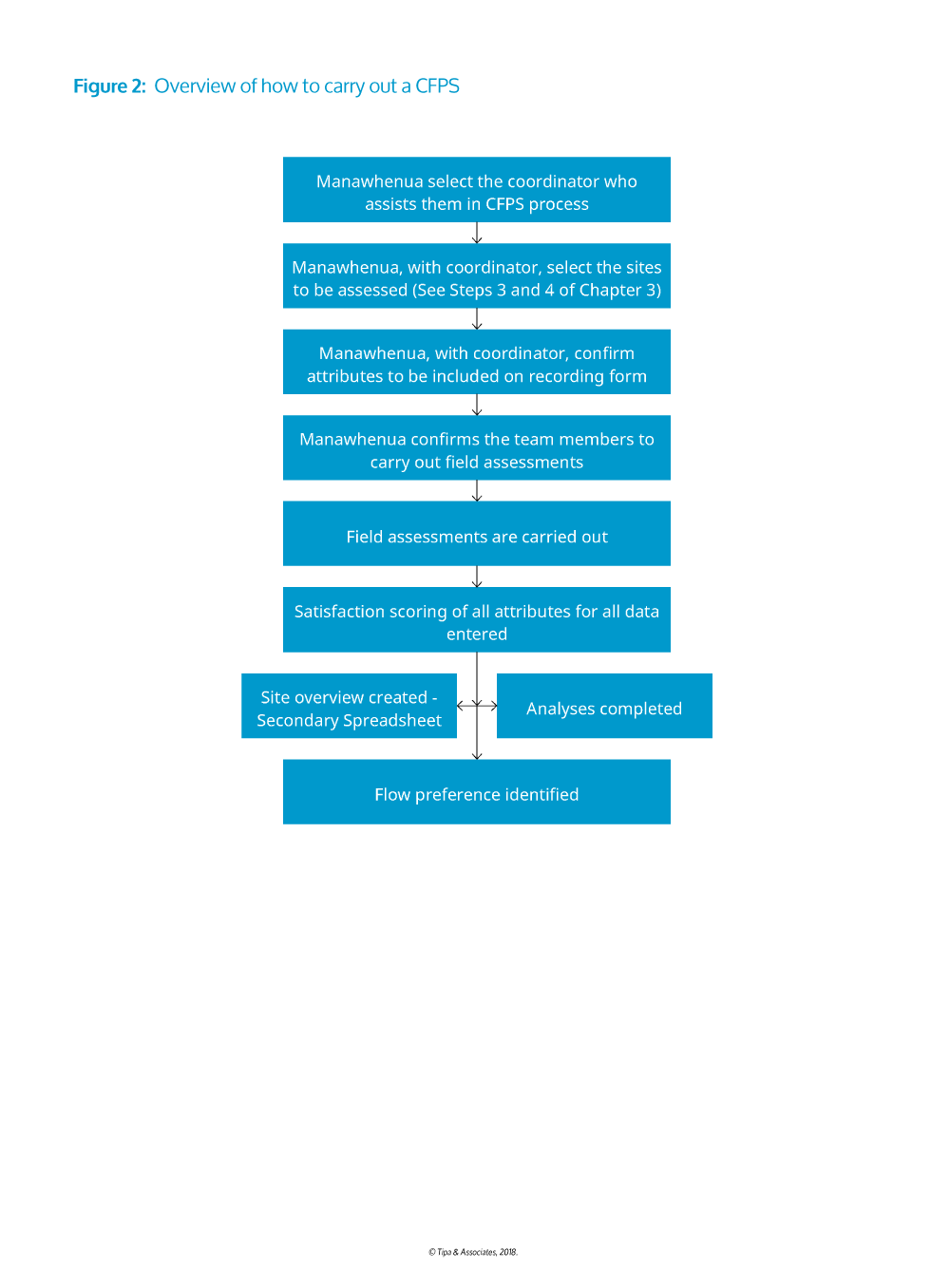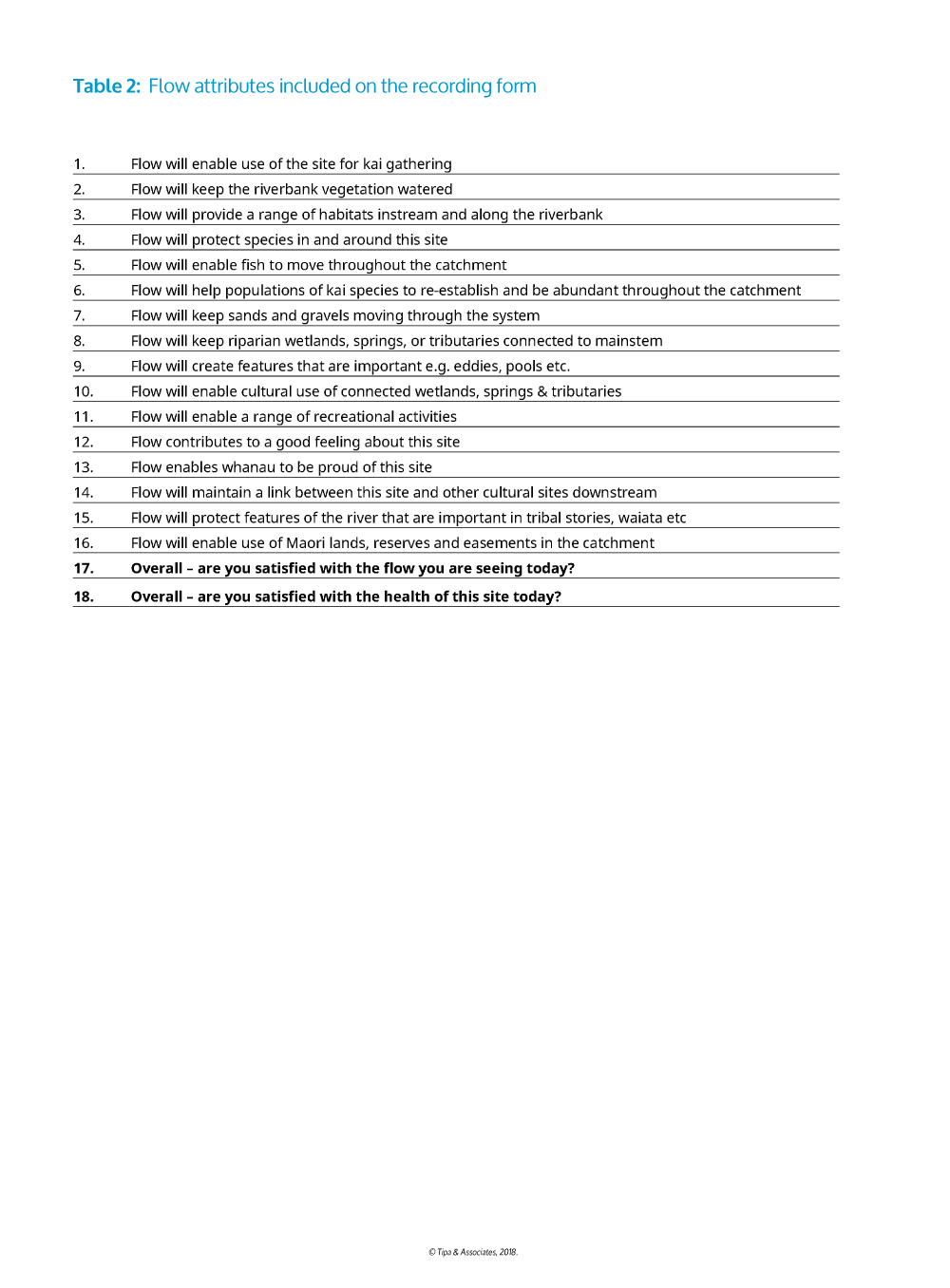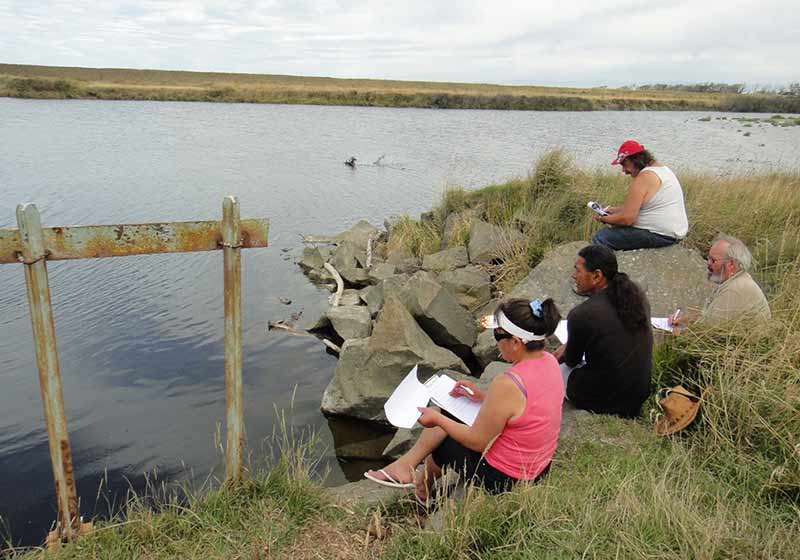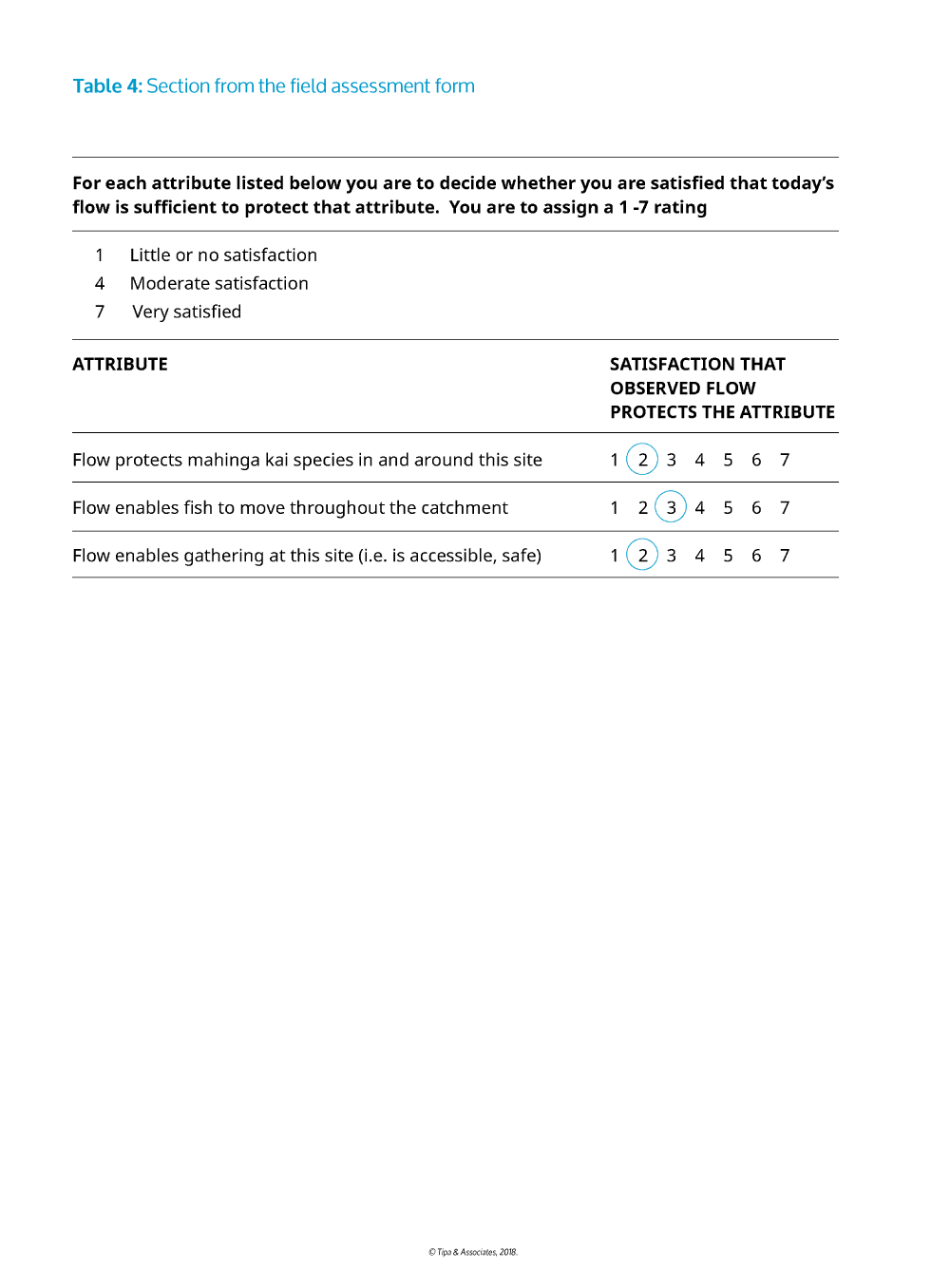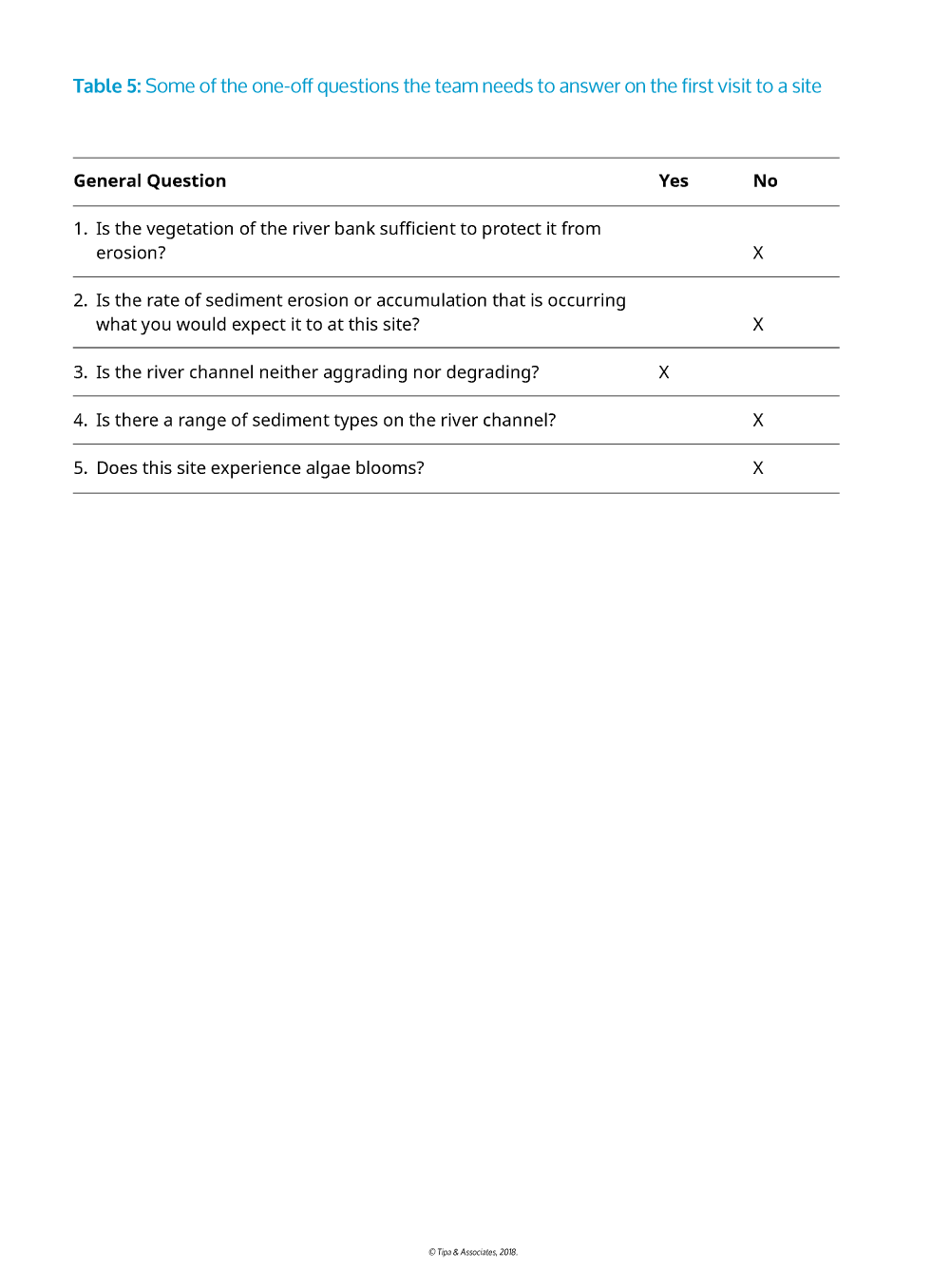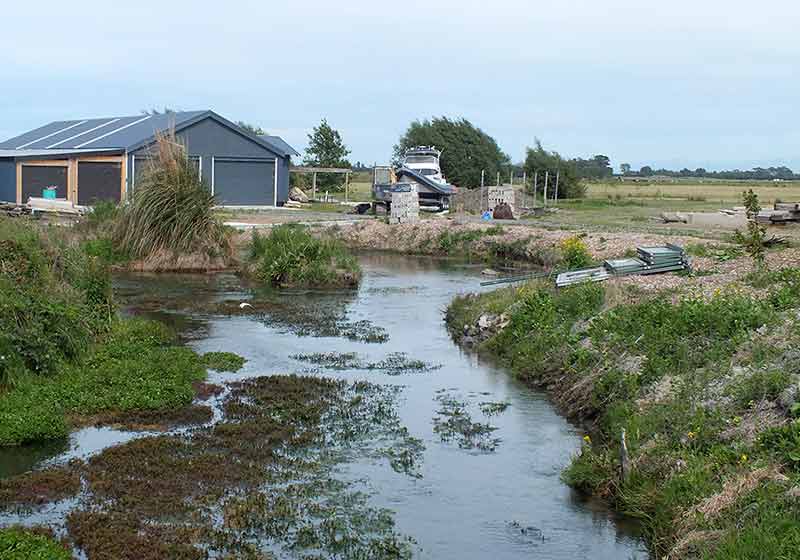2. About the Study
Introducing the cultural flow-preference study (CFPS).
|
Purpose
|
To set out the stages of a Cultural Flow-Preference Study.
To explain how whanau can undertake their own study. To demonstrate how a CFPS was applied in a New Zealand catchment. |
|
Key Questions
|
What is CFPS?
How do I initiate and plan a CFPS? |
It is easy to become completely enthralled by the sounds, music and movement of running water.
Mike Kirkpatrick
Framing a discussion of cultural values
A difficulty confronting managers may be translating an articulation of cultural beliefs, values and practices associated with a resource (such as freshwater) into contemporary management practice. Currently, dependence on technical expertise occurs when undertaking environmental flow assessments. But it is unclear to what extent managers are cognisant of, and responsive to cultural values. More specifically, what cultural practices would be jeopardised by decisions to set stream flows?
Application of the six-step participatory process
|
The first five steps in the participatory process, as illustrated in Table 1, are summarised below.
Step 1: Initiating the project
An initial hui (meeting, focus group) with representatives of the hapu will confirm the individuals to be interviewed, and the mandated members to participate in assessments to observe the sites under different flows. Step 2: Documenting the Manawhenua association with the river
The diversity and complexity of cultural relationships with freshwater are to be explored before defining how their relationship, and interaction with the river, is affected by river flows. Gaining perceptions of changes to flow patterns over time, and the impact of these changes on cultural values, was important. It is noted that a range of frameworks have evolved that assess the impact of flow alterations on ecological values (e.g. Range of Variability Approach and Indicators of Hydrological Alteration) and assume that river ecosystems are evolved from and are adapted to the natural flow regime. Importantly, this stage enables an initial examination of flow related issues because interviewees were challenged to identify how their values and experiences are impacted by aquatic conditions, in particular river flow. |
Step 3: Cultural mapping including cultural opportunity mapping
The participatory mapping exercise will see sites of cultural significance mapped together with the cultural opportunities sought. There were four distinct areas of data collection:
The participatory mapping exercise will see sites of cultural significance mapped together with the cultural opportunities sought. There were four distinct areas of data collection:
- how the river was valued and used by Manawhenua;
- the hydrological characteristics that Manawhenua believe essential to protecting the sites
- valued and used;
- how the current hydrological characteristics compare to historic patterns; and
- how the current hydrological characteristics of the river impact cultural values and uses.
Step 4: Focusing the investigation: discriminating the flow related issues identified
The data collected is to be reviewed to identify those cultural values opportunities, issues, and flow attributes that would be more suited to a cultural assessment undertaken by Maori.
The data collected is to be reviewed to identify those cultural values opportunities, issues, and flow attributes that would be more suited to a cultural assessment undertaken by Maori.
Step 5: The fieldwork component of the CFPS
This step is explained in detail in the section below.
This step is explained in detail in the section below.
Initiating the Fieldwork Component of the CFPS
|
In the next sections we explain the practicalities and the logistics of organising the field component of the CFPS. The process we recommend is set out in Figure 5.
Selecting a coordinatorTo organise the team, plus collect and process all the data, a coordinator is required. Appointment of the coordinator and their involvement in the entire process hopefully will maximise efficiency and assist in maintaining the relationship between the team, coordinator and Manawhenua. It’s recommended the coordinator have the following skills including:
Once selected the coordinator will be required to:
|
Reviewing the interview data collected from whanau members
Before any field assessments can be carried out Manawhenua and the coordinator are required to:
It’s recommended that some of the individuals involved in the interview process should participate in the field assessment process.
- select the sites to be assessed (within a catchment or multiple catchments);
- review the recording form to be used in the field to confirm the attributes that are to appeal on the form; and
- assign a significance rating for each attribute. This step is optional as Manawhenua may say that all attributes are of equal significance.
It’s recommended that some of the individuals involved in the interview process should participate in the field assessment process.
Site selection
The coordinator needs to be cognisant of factors such as:
The coordinator should visit each of the sites to:
The coordinator needs to be cognisant of factors such as:
- the number of sites that can be assessed in a single day of fieldwork;
- the location of sites within catchment and the travel time between sites; the health and safety of whanau who will be accessing the site.
- access considerations; and
- where the nearest flow recorders are and how you can access the data from them.
The coordinator should visit each of the sites to:
- record is GPS reference;
- identify photo points at the site;
- check accessibility of site, and assess safety issues; and
- identify more generally any potential issues with field visit.
|
Finalising the recording form
The CFPS recording form that our assessment teams use in the field (Table 2) includes several attributes of flow. To reiterate, the attributes are confirmed following the hui and interviews with Maori at commencement of the study. For each attribute there is a 7-point Likert scale and open-ended questions to measure preferences. Because fourteen to nineteen attributes are many attributes to work with, we also categorise attributes under a series of components (or themes). Significance scoring (optional)
This is a weighting process. It requires Manawhenua to rate on a scale of one to seven (or 0 if an attribute doesn’t apply at the site) how significant each of the “attributes” are at a specific site. This exercise is only completed once before fieldwork commences. Below is a button to download a section from the significance scoring assessment form. |
Choosing the team
The key dataset that is used within the CFPS is the data collected by the Manawhenua field team. It is up to Manawhenua to select the individuals who will carry out the field assessments. It is helpful to have the some of the same individuals who were involved in the interview process.
Whoever is selected by Manawhenua will be required to go out to all the sites, each day of the field assessment, so they should be committed to the kaupapa. Other considerations for Manawhenua when selecting the individuals to do the field assessments include:
Please note, this CFPS is not a “reconnection tool” to re-introduce whanau to a catchment they might not have been active in for years or generations. It is dependent on assessments being undertaken by people who know their rivers.
Whoever is selected by Manawhenua will be required to go out to all the sites, each day of the field assessment, so they should be committed to the kaupapa. Other considerations for Manawhenua when selecting the individuals to do the field assessments include:
- individuals with background knowledge of the waterway; and
- individuals with a variety of ages. This is a great opportunity for kaumatua and rangatahi to share experience and knowledge.
Please note, this CFPS is not a “reconnection tool” to re-introduce whanau to a catchment they might not have been active in for years or generations. It is dependent on assessments being undertaken by people who know their rivers.
|
Training
Training days will be facilitated by the coordinator, who will organise the logistics and equipment. Training will take place at one of the sites to be assessed. The purpose of the training is to introduce team members to the assessment form, in particular the attributes of flow that appear on the form. Once the attributes have been explained and the team is to carry out an assessment of the site. They are to be encouraged to ask questions. After the team has filled out the form the coordinator can facilitate a discussion with the entire team to see how scores have been awarded, how whanau understand the 1 -7 rating. The coordinator needs to be confident that the team can carry out the field assessments. |
Equipment
The coordinator and team will need the following equipment when scouting out sites and undertaking field assessments:
- Road map with locations of sites to be assessed
- Assessment forms
- Clipboards
- Pens
- GPS unit
- Camera
- Hi-vis vests
- First-aid kits and other health and safety equipment
Undertaking the fieldwork
|
Each team member is to complete an assessment form at each site. A section of the form that is to be used by the assessment team is set out is included in Table 4.
While the team members are completing the forms, the coordinator is to take photos upstream and downstream plus it is recommended that any site-specific issues are photographed. A GPS reference should be recorded for the site and for any photos that are taken. Identification
The form starts by asking team members to write their name, (or initials or number assigned), the site name and the date. If team members’ names are used, they will only be known by the coordinator and are only required for book-keeping. The 14-19 attributes
Team members consider the attribute in question then score the site in terms of how satisfied they are that the flow protects that attributes. Because the recording form is to be used on subsequent assessments, it is important to ask what other attributes should be included on the recording form. If additional attributes are identified by whanau member it is important that the coordinator and the field team agree:
One-off assessment
The last part of the assessment is to be completed at each site during the fist visit and requires the team members to answer a selection of yes/no questions as shown in Table 5. This form only needs to be completed on the first assessment.
The discussion where the team members decide the answer to these questions should be recorded. The questions also highlight why it is important to include as team members those who know the river. |
Collating and entering the data
|
Depending on the number of sites and the frequency of visits the coordinator will be handling a lot of data. This data includes:
Once the data has been collected it needs to be copied and placed in a secondary location. Whanau, hapu or iwi may choose to scan the forms to ensure an electronic backup. All data collected is to be entered to an Excel spreadsheet. The spreadsheet requires the coordinator to enter the site name, general information about site, the GPS reference, comments from Manawhenua, the attributes scores and the overall site score. The coordinator should assign a number to each team member to record on their forms and use this in the spreadsheet as an identifier. The spreadsheet then automatically calculates the averages from all the team and enters it into the CFPS framework and gives an overall average for each of the four components - i.e. the specific components (Mahinga kai, Wai Maori, Hauora and Landscape). It is a simple visual representation of the data. |
The second spreadsheet or the site overview compares site assessments scores over the full course of the fieldwork (typically over a period of months). It requires the coordinator to enter the averaged scores for the four components for a specific site, the significance scores for that site, the average overall score, and the average flow for the day. Once entered to the spreadsheet it’s up to the coordinator to assign the appropriate colour codes.
The analyses that are undertaken are described in greater detail on the Analysing Data page of this site.
The analyses that are undertaken are described in greater detail on the Analysing Data page of this site.
